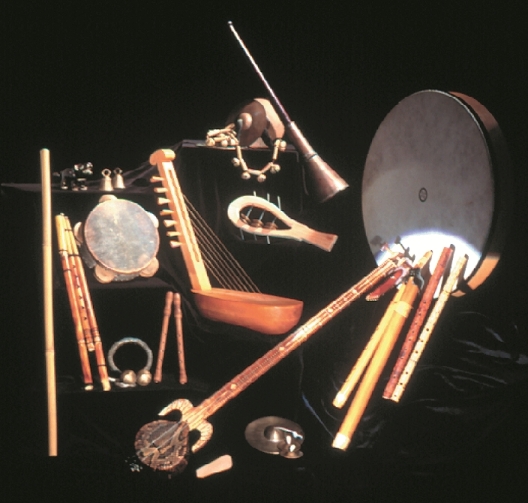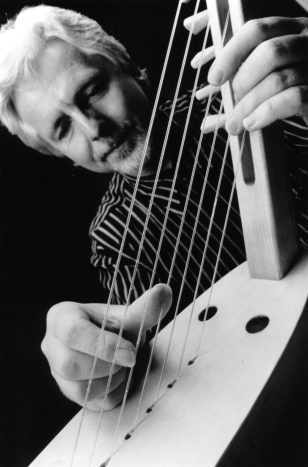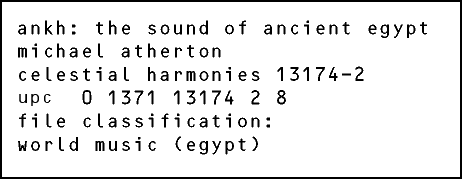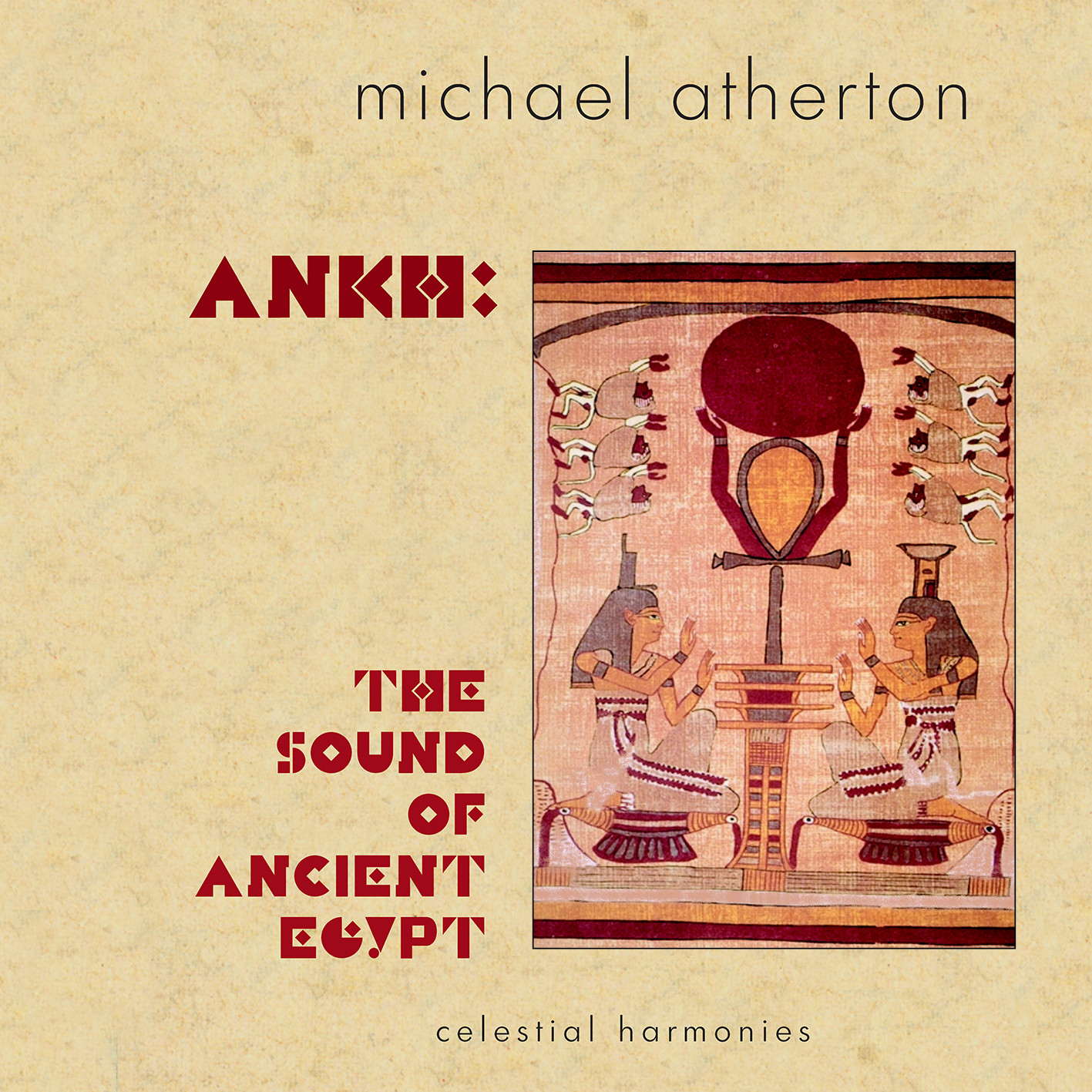Zur Ägypten-Ausstellung 1998 im Australischen
Museum komponierte Prof Atherton, Ethnologe und Multiinstrumentalist,
eine vierteilige Ritualmusik für rekonstruierte Originalinstrumente
(Harfen, Flöten, Trommeln u.a.), Solo- und Chorgesang. Die Musik
zu Ramses Zeiten. Faszinierende Klangwelt auf der Basis solider Forschungsarbeit
(mit ausführlichem Begleitheft).
the project

The catalyst for Ankh: The Sound of Ancient Egypt
was an exhibition—Life and Death in the Land of the Pharaohs,
developed by the National Museum of Antiquities in Leiden, The Netherlands.
The exhibition came to the Australian Museum in 1998. It provided
the challenge of producing a creative reconstruction of ancient Egyptian
music and the inspiration for a longer term research project.
The first stage of the project began with a response
to the contents of the exhibition itself, followed by a delving into
the ever-increasing output of Egyptological scholarship, to establish
a broader musical context. The big questions loomed large: what did
the music sound like? How were the instruments tuned? Was the music
polyphonic? One must proceed by conjecture and deduction, using the
literary and visual record in conjunction with an examination of surving
instruments. The answers remain elusive, mainly gleaned from instruments
housed in museums, along with iconographic and literary evidence.
There is no surviving music notation, nor any musical theory which
might instruct one about pitch, rhythm and timbre.
In approaching the composition and performance of the
music, Michael Atherton drew on his experience in playing medieval
monophony, eastern European and Turkish folk music, as well as his
participation in intercultural music projects.
Atherton primarily uses 5, 6, and 7 note scales based
on specific pitches, resulting in a combination of Moroccan ramal
mai mode and Persian afshari. He also gravitates toward
pentatonic scales and major modes. The melodies move in small steps.
The setting of the hymns is monophonic, with the inclusion of call
and response development. Sung items include interpolated recitations,
as a means of acknowledging a deep connection between lanuguage and
music.
Ankh: The Sound of Ancient Egypt is a contribution
to giving a voice to the vivid images of a dynamic musical culture.
the artists

Multi-instrumentalist Michael Atherton composed and
produced this recording. He is an internationally travelled performer,
composer, author of books on musical instruments, an accomplished
composer for the screen, and writes chamber music. Since 1993, he
has served as a Foundation Professor at the University of Western
Sydney, Nepean.
The artists featured on this extraordinary reconstruction
of the sound of ancient Egypt include some of Australia's finest musicians,
including Michael Atherton, Mina Kanaridis, Philip South and Greg
Hebblewhite. Mary Demovic provides spoken word and the chorus is comprised
of Maria Campbell, Angela Shrimpton, Stephen Clark, and Hasan Shanal.
Using visual records, Atherton gathered and adapted
a variety of similar instruments from various cultures (Greek, Turkish,
Indian, Egyptian, etc.) to recreate the sound of ancient Egypt. These
include: sambuca (boat-shaped harp), a trigon (angle
harp), auloi (double–oboes), a shawm to simulate
a Tutankhamun trumpet), adapting bronze disks and metal rods to simulate
sistra, a pair of Turkish zils to simulate crotala,
adapting a rewap to simulate the long–lute, riq
(tambourine), bendir and tar (framedrums), and udongo
for timbral variety.
tracklist
| |
Atum (Creator Sun God) |
16'18" |
| 1 |
(a) song |
1'09" |
| 2 |
(b) instrumental |
6'46" |
| 3 |
(c) instrumental |
3'19" |
| 4 |
(d) instrumental |
1'16" |
| 5 |
(e) instrumental |
3'46" |
| |
Maat (Truth, Balance, Order) |
15'46" |
| 6 |
(a) song |
1'59" |
| 7 |
(b) instrumental |
1'35" |
| 8 |
(c) instrumental |
3'37" |
| 9 |
(d) instrumental |
4'01" |
| 10 |
(e) instrumental |
4'31" |
| |
Khet (The Physical Body) |
15'27" |
| 11 |
(a) song |
1'48" |
| 12 |
(b) instrumental |
6'26" |
| 13 |
(c) instrumental |
5'01" |
| 14 |
(d) instrumental |
2'08" |
| |
Shen (Eternity) |
14'35" |
| 15 |
(a) song |
2'20" |
| 16 |
(b) instrumental |
4'28" |
| 17 |
(c) instrumental |
5'02" |
| 18 |
(d) instrumental |
2'45" |
| |
Total Time: |
62'21 |








